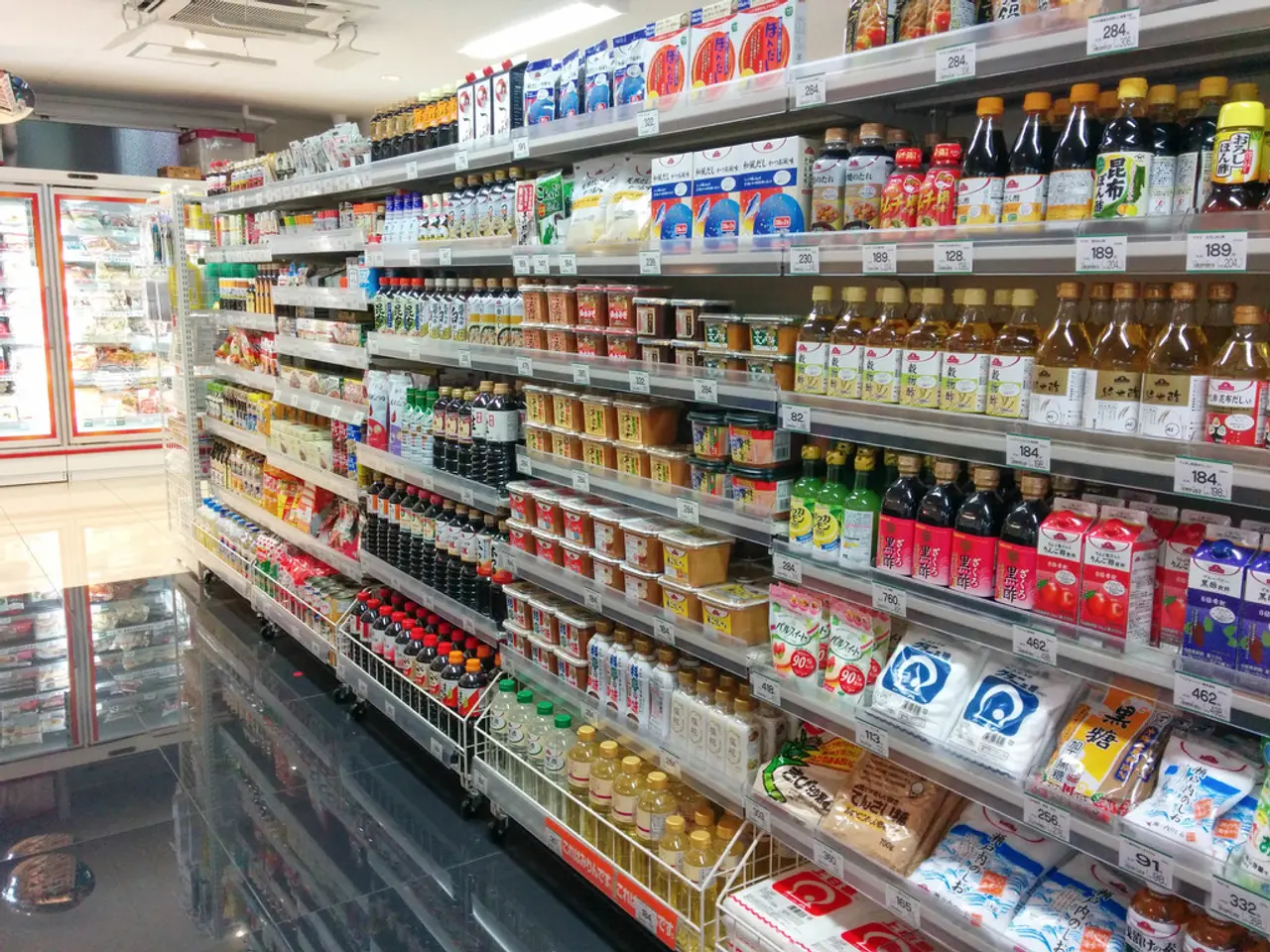Grocery sales statistics during June highlighting market tendencies
In a recent development, the strong growth in e-grocery sales observed in June is expected to persist, with delivery becoming effectively free for many users. According to David Bishop, a partner at Brick Meets Click, this trend is largely due to the increasing number of delivery services offering free delivery options.
The monthly survey that highlighted this surge in e-grocery sales is sponsored by Mercatus, a company that emphasizes the importance of owning customer relationships and building a smarter, more connected experience to drive growth and remain relevant.
The surge in e-grocery sales, reaching $9.8 billion in June, represents a 27.6% year-on-year (YoY) increase. This growth was evident across all three e-commerce modes: pickup, delivery, and ship-to-home. In contrast, in-store grocery sales dropped during the same period.
The shift in consumer spending patterns also saw a rise in the share of households using Walmart as their primary grocery store and a rise in the use of deep discount chains like ALDI. This trend reflects consumers' efforts to save money amid economic uncertainty.
The National Retail Federation (NTF) released its CNBC/NRF Retail Monitor for June, revealing that total retail sales, excluding automobiles and gasoline, decreased by 0.33% compared to May but increased by 3.19% YoY. This suggests that while consumers are adopting a more cautious approach to spending, overall retail sales are still growing.
Mark Fairhurst, chief growth marketing officer at Mercatus, encourages businesses to focus on taking control of their customer data and using it to stay competitive. Fairhurst's statement comes in response to the shift in spending across the retail landscape, which he attributes to consumers' careful shopping habits.
The current economic climate, characterised by steady but cautious spending, increased price sensitivity, and more deliberate purchasing behaviours, has led to a change in the nature of consumer spending. Consumers are shopping smarter, researching more before buying, clipping coupons, and purchasing generic or discounted brands, especially in groceries.
In the first half of 2025, consumer spending grew very modestly (about 0.4%), despite increased shopping engagement. Orders increased (12%) but average order value dropped (10%), indicating consumers are buying more items but at lower prices, reflecting a "value over volume" approach and tighter budgets.
Despite these challenges, consumer confidence remains relatively resilient, with surveys showing that while consumer sentiment is subdued compared to previous years, consumers generally feel income prospects are stable or improving slightly. The perceived likelihood of a recession in the next year has declined, which supports ongoing cautious spending.
In summary, the economic uncertainty and tariffs have not sharply reduced consumer spending but have changed its nature towards more deliberate, value-driven shopping. Grocery sales reflect these trends with consumers trading down, utilising discounts, and closely managing budgets, especially amid price pressures caused by trade policies. Despite this, overall consumption remains resilient but cautious.
- In contrast to the growing trend in e-grocery sales, it seems that the interest in sports might have dwindled, as more households are using their savings from shopping to allocate towards other areas.
- Amidst the cautiousconsumer spending patterns, it's worth considering the potential impact on industries like sports, where the decline in merchandise sales could be noticeable, as consumers prioritize affordability and value over indulgence.




